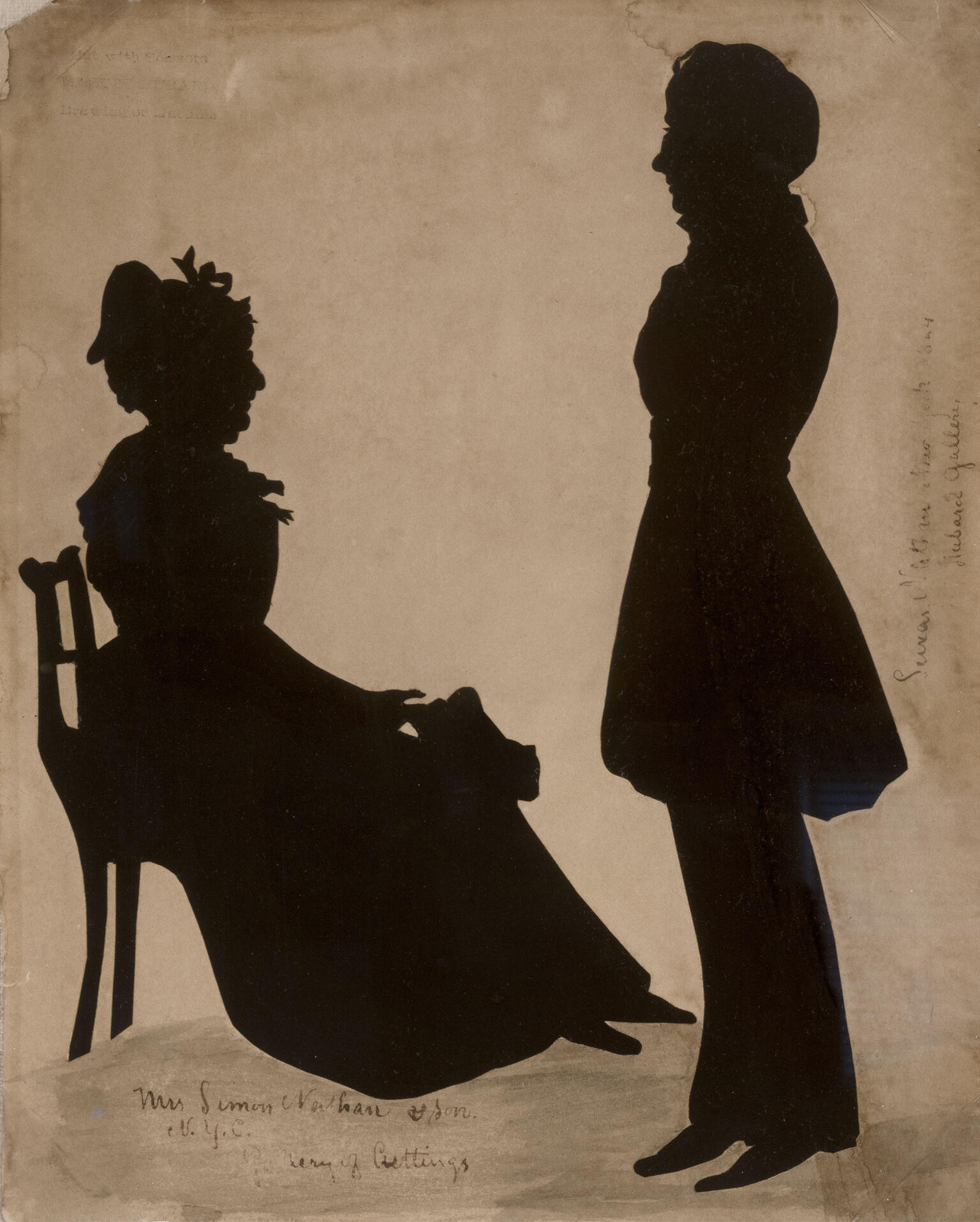Grace Mendes Seixas Nathan (Mrs. Simon Nathan) and Her Son Seixas Nathan
William James Hubard
ca. 1824
Grace Mendes Seixas Nathan was born in Connecticut in 1752 to a patriotic, literary Jewish family. In 1780, she married the British merchant Simon Nathan, a supporter of the American Revolution who arrived in colonial America in 1773. Their son Seixas, born in 1785, was one of the signers of the New York Stock Exchange’s constitution and the president of Congregation Shearith Israel, the first Jewish congregation established in North America. Silhouette portraits cut from paper, affordable and easy to obtain, were popular before the advent of photography.
Credits
Private collection.
Published in: The Posen Library of Jewish Culture and Civilization, vol. 6.
You may also like
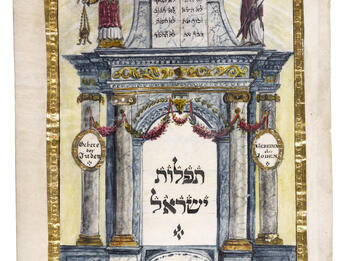
Illustrated Daily Prayer Book
Following his retirement, Hijman Binger created a daily prayer book, drawing its texts from well-known sources and illustrating the manuscript with the help of his children. Completed in 1820, the…

Medal from Dedication of the Munich Synagogue in 1826
I. W. Loewenbach’s medal commemorating the dedication of the new synagogue in Munich (1826) is among the earliest German synagogue medals. On one side of the medal, one sees the façade of the…
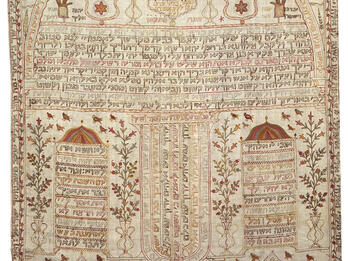
Torah Curtain
This Torah curtain was made in Ankara, Turkey. The motifs of a central menorah and hands making the priestly blessing were common in other Ottoman Jewish ritual folk art. Embroidered verses from the…
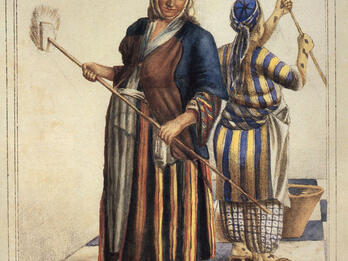
Jewish Women from Izmir Whitewashing
In the nineteenth century, especially in the era before photography, it was common for artists to travel to exotic or picturesque locations in Europe, North Africa, and the Near East, and to produce…
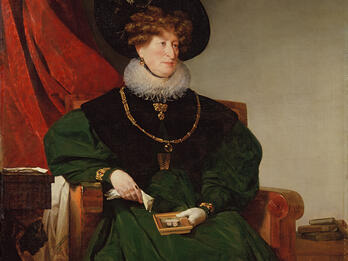
Portrait of Cecilie Freiin von Eskeles
Cecilie Freiin von Eskeles (1760–1836) was noted for her salon, which attracted leading musical, literary, and intellectual figures. Daughter of the court Jew Daniel Itzig, she brought the Berlin…
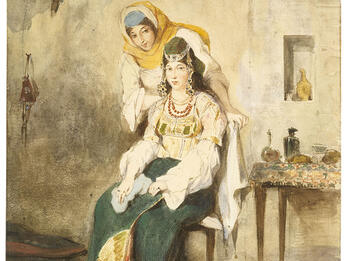
Saada the Wife of Abraham Benchimol and Préciada, One of Their Daughters
In 1832, after the French conquest of Algeria, French artist Eugène Delacroix (1798–1863) traveled to North Africa, creating a series of paintings and drawings that exoticized scenes of daily life in…
Engage with this Source
Creator Bio
William James Hubard
William James Hubard was an English painter who specialized in silhouettes, portraits, and miniatures. He came to America in 1824 and soon thereafter established his own successful gallery in Boston. He later moved to Virginia. In 1853, he was given an exclusive license by the Virginia General Assembly to make bronze copies of Houdon’s marble statue of George Washington. In 1862, during the Civil War, he was killed in an accident while making munitions for the Confederate army.
Public Access
Image
Places:
New York City, United States of America
You may also like

Illustrated Daily Prayer Book
Following his retirement, Hijman Binger created a daily prayer book, drawing its texts from well-known sources and illustrating the manuscript with the help of his children. Completed in 1820, the…

Medal from Dedication of the Munich Synagogue in 1826
I. W. Loewenbach’s medal commemorating the dedication of the new synagogue in Munich (1826) is among the earliest German synagogue medals. On one side of the medal, one sees the façade of the…

Torah Curtain
This Torah curtain was made in Ankara, Turkey. The motifs of a central menorah and hands making the priestly blessing were common in other Ottoman Jewish ritual folk art. Embroidered verses from the…

Jewish Women from Izmir Whitewashing
In the nineteenth century, especially in the era before photography, it was common for artists to travel to exotic or picturesque locations in Europe, North Africa, and the Near East, and to produce…

Portrait of Cecilie Freiin von Eskeles
Cecilie Freiin von Eskeles (1760–1836) was noted for her salon, which attracted leading musical, literary, and intellectual figures. Daughter of the court Jew Daniel Itzig, she brought the Berlin…

Saada the Wife of Abraham Benchimol and Préciada, One of Their Daughters
In 1832, after the French conquest of Algeria, French artist Eugène Delacroix (1798–1863) traveled to North Africa, creating a series of paintings and drawings that exoticized scenes of daily life in…


